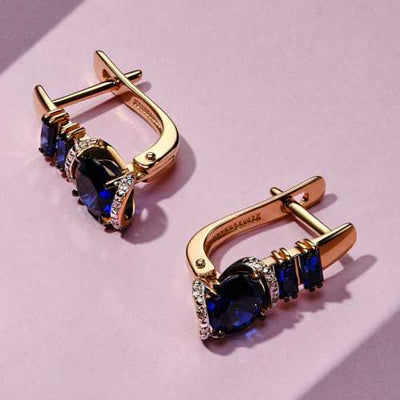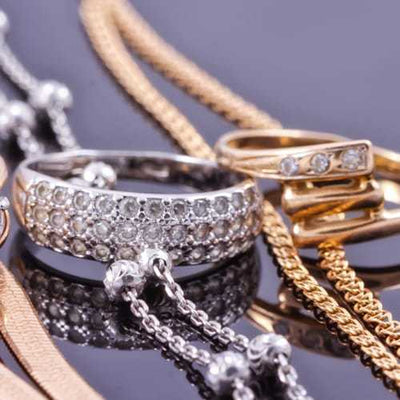Wedding traditions are varied and rich in cultures all over the world. The same is true for engagements. A period of engagement before a wedding is common in many cultures across the globe. But, do all cultures use engagement rings?
Engagement rings can be traced back as far as ancient Egypt. Circles were believed to be symbols of eternity and soon-to-be-married couples would exchange rings made of braided reeds. This tradition has carried on since and has influenced many of the beliefs about engagement rings today. Below are a few ways that different countries and cultures around the world use rings, and other jewelry, to symbolize this exciting time in a couple’s relationship.
Engagement Rings in the United States
Engagements in the United States are one of the more familiar traditions around the world. Think classic diamond rings, shiny and new, made with precious metals and stones. This ring is traditionally given to the woman to wear on her left hand, with a wedding band added on the day of the wedding ceremony. This tradition comes from an ancient Roman belief that the left ring finger is connected directly to the heart through a vein known as the “vein of love.”
Native American culture differs slightly. Rather than a ring made from precious stones and metals, Native Americans opt to propose with a silver ring adorned with semi-precious stones. The result is a beautiful and colorful ring, unique to the couple themselves.
Engagement Rings in Western Europe
The United Kingdom, Germany, Norway and France have traditions very similar to the United States. Diamond rings make an appearance for soon-to-be-married couples in these countries as well. The difference? Engagement rings are often worn on the right hand and then switched to the left hand after the wedding.
French women tend to prefer colorful gemstones like sapphires, emeralds or rubies instead of diamonds. This tradition is becoming more popular as women in other Western countries are choosing to leave diamonds behind for more colorful gemstones.
Ireland differs from their Western European neighbors in the type of ring that is given. The Claddagh ring is given for an engagement and it is designed to look like a heart with a crown placed on top, held by hands on either side of the heart. This ring symbolizes love as well as friendship. It can be worn on either the right or left hand. Whether you are engaged or married determines the way the ring faces on your hand.
Engagement Rings in Nordic Regions
Engagements in Nordic regions, such as Iceland, Finland and Denmark, are traditionally very simple. Unlike many of the Western cultures, Nordic countries traditionally give both partners an engagement ring to wear. This ring is usually very simple, yet elegant. A gold or silver band is the tradition for both partners in this part of the world.Engagement Rings in Chile
Similar to Nordic countries, Chile has a tradition of giving both partners a piece of jewelry to celebrate engagement in their culture. These rings are worn on the right hand for each partner. Once the wedding ceremony is complete. The rings are switched to the left hand. This movement symbolizes the change in relationship status, from an engaged couple to a married couple.Engagement Rings in Hindu Cultures
For many Hindu women, a toe ring is the symbol of engagement. These rings are called “bichiya.” The tradition of toe rings comes from the belief that the ring pushes on the nerves connected to the reproductive system. Wearing a toe ring is believed to keep the reproductive organs healthy. Many Hindu women also wear traditional Western-style engagement rings.
Engagement Rings in India
Brides-to-be in India wear bangles made of various metals instead of engagement rings. Typically made of glass, gold or iron, these bangles symbolize good fortune and prosperity for the happy couple. These are important symbols for Indian marriage, as well as Indian culture.
On their wedding day, Indian brides are adorned with lots of jewelry, including the bangles worn for their engagement period. They also wear gold necklaces, rings, nose rings, belts, headdresses and more. Indian women often honor Hindu tradition as well, wearing a toe ring on their big day.
Engagement Rings in Africa
Couples in Kenya skip engagement rings altogether. In honor of Native traditions, couples give one another elaborate, handmade jewelry. Decorative beading has been a part of African cultures for many generations, and this type of jewelry is used to symbolize engagements.
Exchanging jewelry made of this decorative beading is common throughout Africa. The color of beads used in this jewelry varies based on the African group creating it, the region the beads come from, the religion of the couple, and even the climate the couple lives in. This makes each piece of jewelry highly individualized and incredibly unique for each couple.
Africa is rich in diamonds and gemstones, and many of the world’s diamond engagement rings can be traced back to Africa where they were mined. But, for African nations, engagement rings are not part of the local tradition. Many men in Africa still pay a dowry to the bride-to-be’s family, and seek permission from the bride’s family before an engagement becomes official.
Engagement Rings in China
Couples in China have not traditionally exchanged rings at the time of their engagement. Western influence in the region has made engagement rings more common, but China has held tight to their tradition, and rings are still not commonplace throughout the country. Most couples still receive money or other goods to celebrate their engagement.
We have an extensive selection of engagement rings at Noe’s Jewelry so you can find something truly special for your significant other. Visit our jewelry store today in Raymore, Missouri, or contact us at 816-322-7227.






